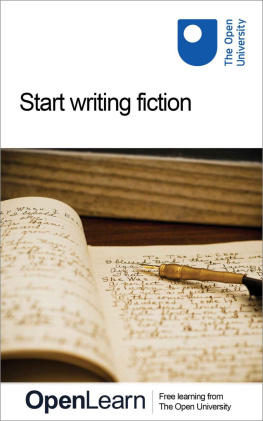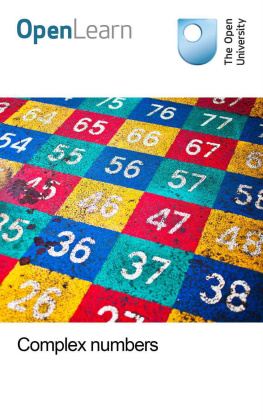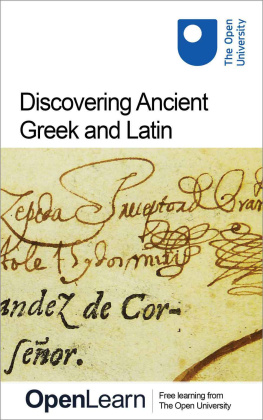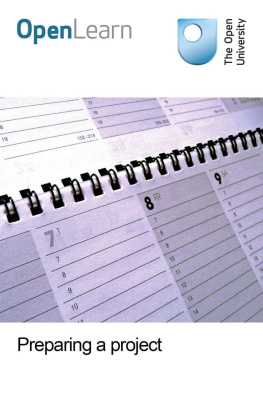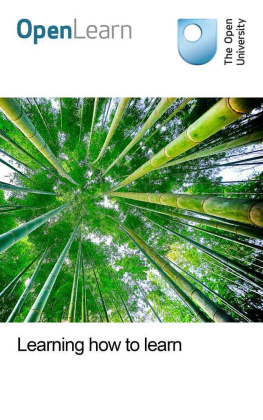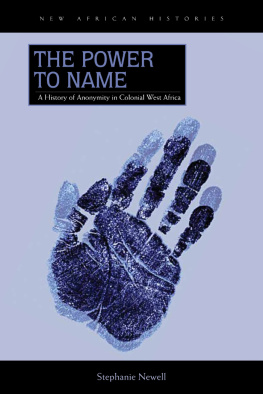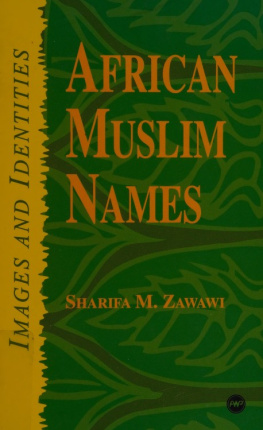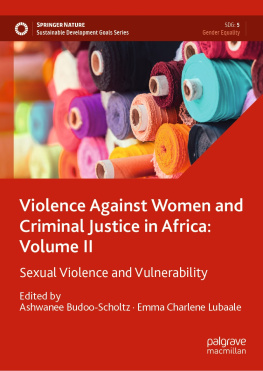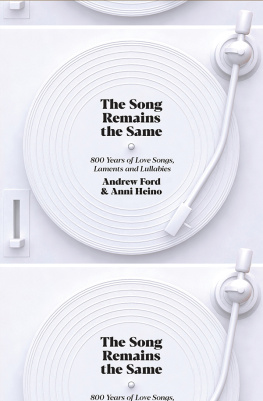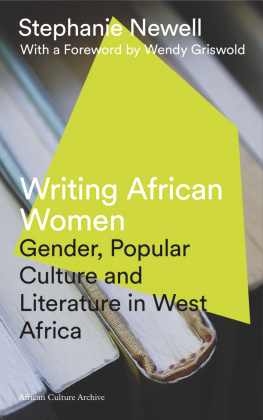A174_1
Start writing fiction
About this free course
This free course provides a sample of Level 1 study in Creative Writing: http://www.open.ac.uk/courses/find/creative-writing .
This version of the content may include video, images and interactive content that may not be optimised for your device.
You can experience this free course as it was originally designed on OpenLearn, the home of free learning from The Open University - www.open.edu/openlearn/history-the-arts/culture/literature-and-creative-writing/creative-writing/start-writing-fiction/content-section-0
There youll also be able to track your progress via your activity record, which you can use to demonstrate your learning.
Copyright 2016 The Open University
Intellectual property
Unless otherwise stated, this resource is released under the terms of the Creative Commons Licence v4.0 http://creativecommons.org/licenses/by-nc-sa/4.0/deed.en_GB . Within that The Open University interprets this licence in the following way: www.open.edu/openlearn/about-openlearn/frequently-asked-questions-on-openlearn . Copyright and rights falling outside the terms of the Creative Commons Licence are retained or controlled by The Open University. Please read the full text before using any of the content.
We believe the primary barrier to accessing high-quality educational experiences is cost, which is why we aim to publish as much free content as possible under an open licence. If it proves difficult to release content under our preferred Creative Commons licence (e.g. because we cant afford or gain the clearances or find suitable alternatives), we will still release the materials for free under a personal end-user licence.
This is because the learning experience will always be the same high quality offering and that should always be seen as positive even if at times the licensing is different to Creative Commons.
When using the content you must attribute us (The Open University) (the OU) and any identified author in accordance with the terms of the Creative Commons Licence.
The Acknowledgements section is used to list, amongst other things, third party (Proprietary), licensed content which is not subject to Creative Commons licensing. Proprietary content must be used (retained) intact and in context to the content at all times.
The Acknowledgements section is also used to bring to your attention any other Special Restrictions which may apply to the content. For example there may be times when the Creative Commons Non-Commercial Sharealike licence does not apply to any of the content even if owned by us (The Open University). In these instances, unless stated otherwise, the content may be used for personal and non-commercial use.
We have also identified as Proprietary other material included in the content which is not subject to Creative Commons Licence. These are OU logos, trading names and may extend to certain photographic and video images and sound recordings and any other material as may be brought to your attention.
Unauthorised use of any of the content may constitute a breach of the terms and conditions and/or intellectual property laws.
We reserve the right to alter, amend or bring to an end any terms and conditions provided here without notice.
All rights falling outside the terms of the Creative Commons licence are retained or controlled by The Open University.
Head of Intellectual Property, The Open University
978 1 47300 097 1 (.epub)
978 1 47300 002 5 (.kdl)
Contents
Introduction
You can experience this free course as it was originally designed on OpenLearn, the home of free learning from The Open University - www.open.edu/openlearn/history-the-arts/culture/literature-and-creative-writing/creative-writing/start-writing-fiction/content-section-0
This free course, Start writing fiction, looks at how characters might be drawn and how setting is established. It works on the different levels of characterisation, from flat to round, and how character and place interact. It also works on the effect of genre and how genre can be used.
The main teaching material in this course is taken from an existing publication, The Fiction Writer's Workshop by Josip Novakovich (1995).
Novakovich is an award-winning writer (of short stories mainly), who teaches fiction writing at the University of Cincinnati. His chapters on Character and Setting are included within this course. I'll indicate when you should read these extracts and I'll also outline the listening and writing activities that accompany them.
This course is split into the following sections:
This OpenLearn course provides a sample of Level 1 study in Creative Writing.
You might be particularly interested in the following courses offered by The Open University:
- A215 Creative Writing
- A363 Advanced Creative Writing
- BA English Literature and Creative Writing
- MA Creative Writing Part 1
- MA Creative Writing Part 2
Tell us what you think! Wed love to hear from you to help us improve our free learning offering through OpenLearn by filling out this short survey.
Learning outcomes
After studying this course, you should be able to:
- identify strengths and weaknesses as a writer of fiction
- demonstrate a general awareness of fiction writing
- discuss fiction using basic vocabulary.
1 Character
You can experience this free course as it was originally designed on OpenLearn, the home of free learning from The Open University - www.open.edu/openlearn/history-the-arts/culture/literature-and-creative-writing/creative-writing/start-writing-fiction/content-section-0
1.1 Creating characters
Activity 1
Click on setting and genre below to read the first few paragraphs from Novakovichs chapter on Character.
setting and genre
As an ongoing exercise, apply this formula when building stories in your journal. See if it works for you.
1.2 Round and flat characters
What about minor or peripheral characters? How deeply do they have to be imagined?
Activity 2
Click on 'Round and flat characters' below to read the section called Round and flat characters. Showing the contradictions in characters is one way of making them round.
Round and flat characters
Take one of the stereotypes mentioned (shifty-eyed thief, jovial fatso, etc.) or use one of your own. Write a brief scene in which you portray that character in a complex way, going against the usual expectations.
Examples:
- the bullying headmaster with a tender sentimental side;
- the meticulous manager who lives in a messy house;
- the shy librarian who goes bungee-jumping;
- the habitual flirt who avoids relationships.
1.3 Sources of characters
Activity 3
Click on 'Sources of characters' below and read Sources of characters. This outlines the main methods of finding and developing fictional characters.
Sources of characters
Activity 4
Click below to listen to novelists discuss themselves and their fiction.
Audio content is not available in this format.
The use of autobiography in fiction
In the audio file above, novelists talk about how they have used themselves in their fiction (the autobiographical method), often as a starting point for the creation of someone different.

